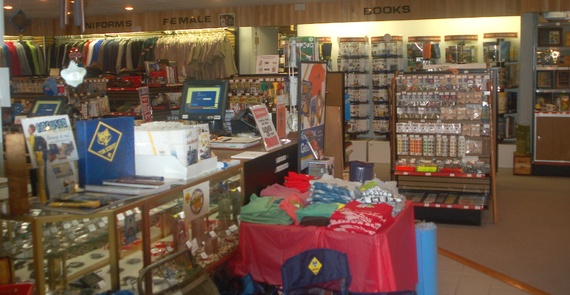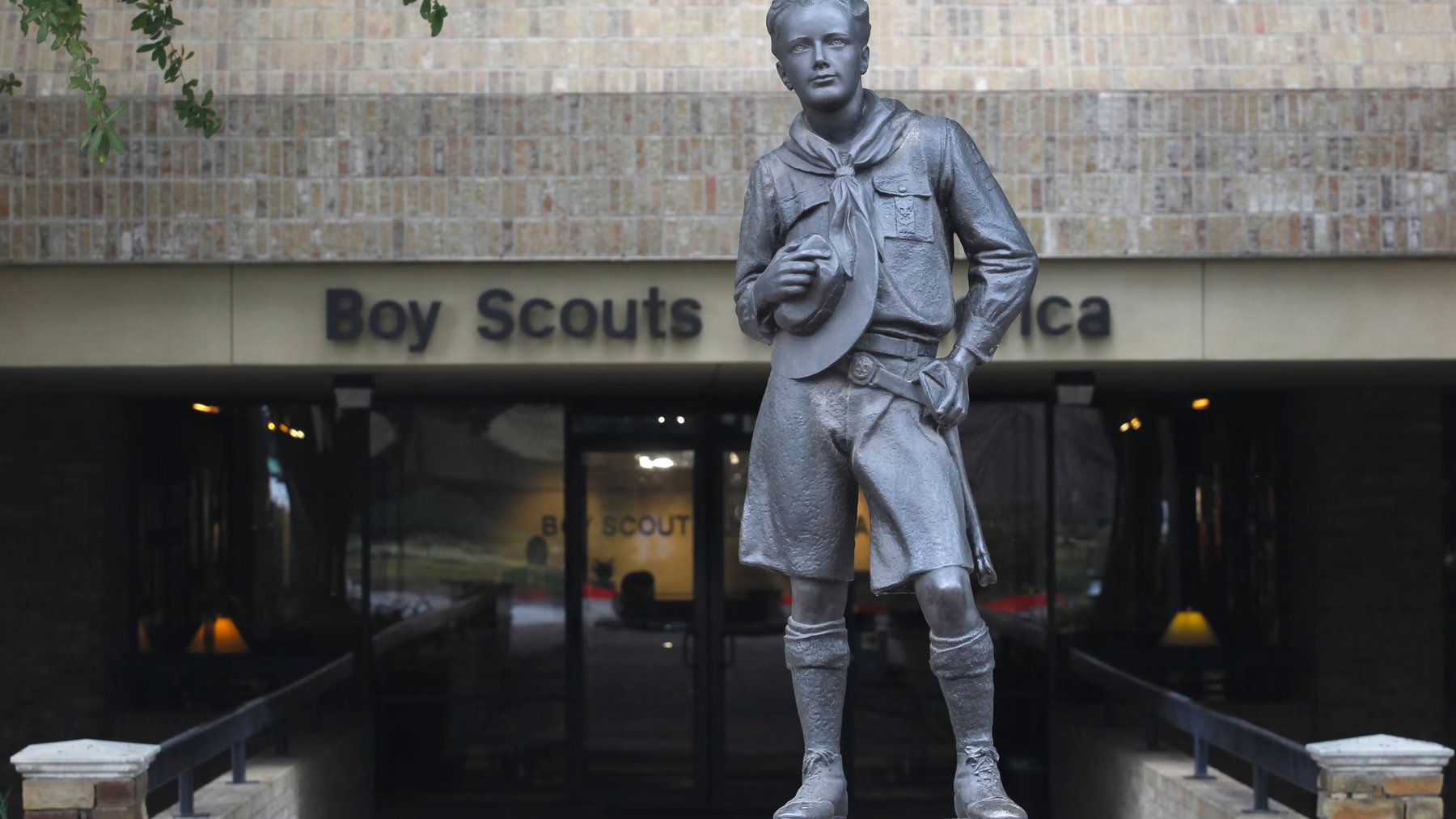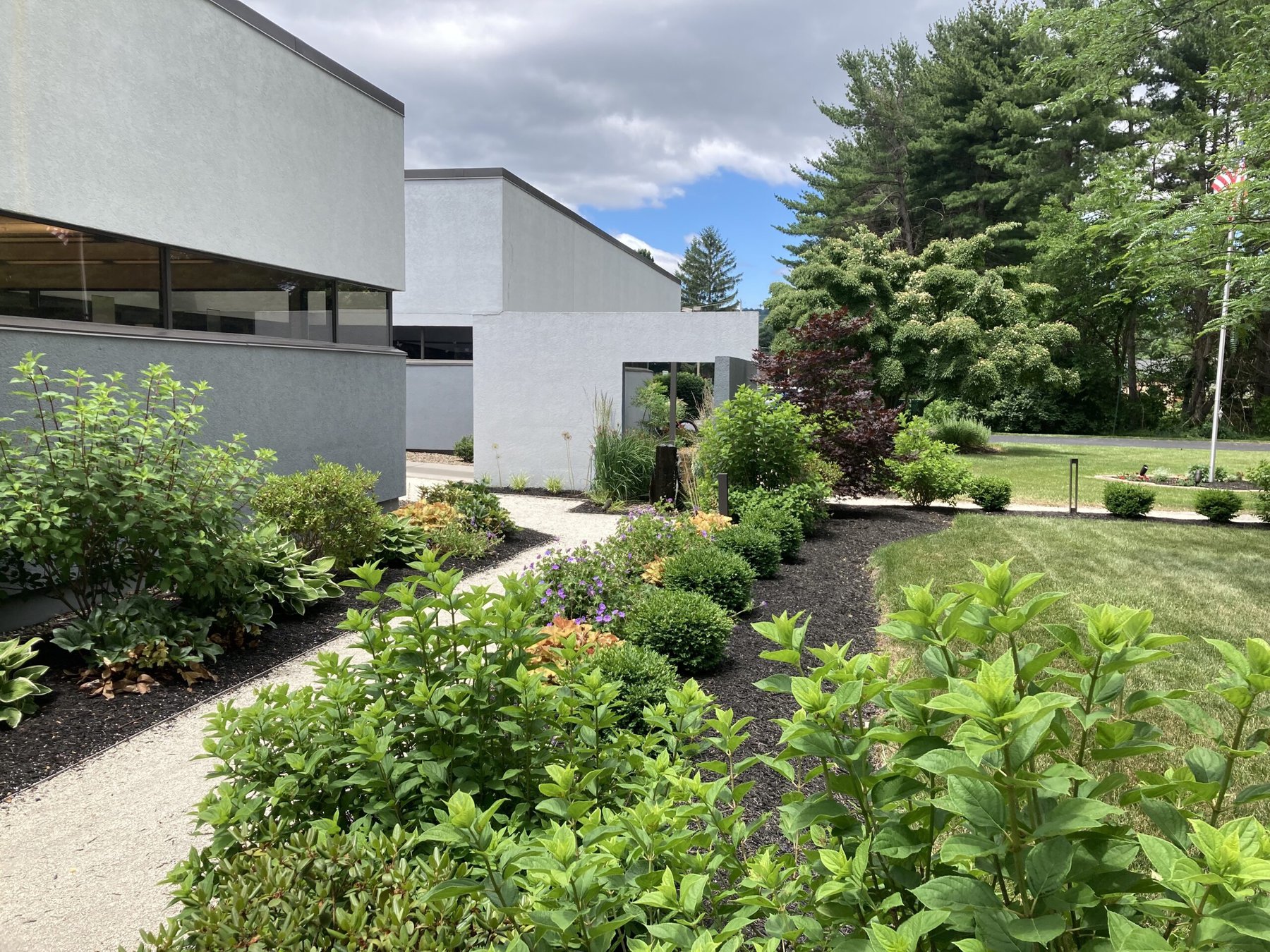Yesterday I mentioned one of the ongoing and heartening aspects of our American Futures visits: the ways towns small and large are re-knitting the informal social fabric whose presence creates “community” and whose absence means atomized, mutually suspicious existence. Yesterday’s example was the expanding role of libraries, with an example from Columbus, Ohio.
Today’s installment: the Boy Scout movement, and the ways it has adapted willingly and otherwise to a changing America. John Tierney has a very interesting report from Allentown, Pennsylvania, which puts the evolving Scouting organization there in the larger context of academic analyses of cities that do and do not maintain viable social-connection networks. If any of these themes is relevant to you, or if you did (like me) or did not (like John, as he explains) spend some portion of your life as a Boy or Girl Scout, please check it out below.
John Tierney:
I knew early on that I wasn’t cut out for the Boy Scouts. I was a Cub Scout for only a year in elementary school before the reality was clear to me: Those worthy attributes mentioned in the Scout Law were beyond my reach.
And now, more than a half-century later, those virtues are also beyond my memory. So, with my addled brain unable to call up the Scout Law from its dark, gray recesses, I Googled it. What I found rings a bell: “A Scout is trustworthy, loyal, helpful, friendly, courteous, kind, obedient, cheerful, thrifty, brave, clean, and reverent.” To me, that sounds more like an aspirational statement than a law, but who’s to say?! Whatever you call it, that set of traits is still beyond my reach.
And yet, I’ve recently found my way back to the Scouts—specifically, to the Minsi Trails Council of eastern Pennsylvania and western New Jersey—this time, as an interested observer, rather than as someone harboring notions of ever being obedient or reverent.
In August, Deb and Jim Fallows and I spent most of a week in Allentown, Pennsylvania, the queen city of the Lehigh Valley, reporting on the city’s revitalization efforts. (You can find some of our earlier reports on Allentown here.) The Scouts caught our eye there, just as other civic associations have attracted our attention in other cities, such as the YMCA in Redlands, California, which Deb profiled in this piece.
Why the Scouts? The story of how the Scouts in Allentown came to our attention is somewhat indirect, so bear with me. While doing research on Allentown before going there, I came across a 2009 book titled Why the Garden Club Couldn’t Save Youngstown, by Sean Safford, an economic sociologist.
In this book, Safford contrasts Allentown, Pennsylvania, with Youngstown, Ohio, and essentially argues that Allentown had more success weathering economic hardships in the 1980s than Youngstown did because Allentown had a greater reservoir of social capital, going back decades, than did its Ohio counterpart—social capital of a sort that bridged social and economic divisions and facilitated cooperation and problem-solving.

The Boy Scouts organization played a key role, going back to well before World War II, when Charles Schwab, the powerful head of Bethlehem Steel, was especially interested in the Boy Scouts, so it was on that organization that he lavished his attention and concentrated his civic involvement. Here’s how Safford elaborates on this point:
Schwab was no ordinary citizen; he was arguably the most important—highest status—individual in the region, and his decision to concentrate his civic involvement in one place had an unintended consequence: The Boy Scout board became the board one needed to be on if one wanted to accomplish goals in the Lehigh valley because involvement on that board provided access to Schwab. The Boy Scouts and the ideology they espoused were attractive and complementary to the goal; but more important was the role the Boy Scout board came to play in serving as a bridge across ethnic, class, and indeed, geographic divisions within the valley. As a result, it became a vital meeting point and mobilizing platform when crisis eventually ensued.
Pretty interesting—at least, I think so. And Safford’s fancy social-science analysis showed that in the year 2000—many, many decades after Schwab’s years on the board—the Minsi Trails Council of the Boy Scouts was still ranked as the most prominent civic organization in the Allentown area (FYI to any network-analysis wonks out there: Safford used eigenvector centrality measurements). The Scouts were more prominent (i.e., had a higher “centrality” score) than local hospitals, universities, banks, economic-development organizations, and cultural institutions such as the symphony and the art museum.
Scout or non-scout, you’ve got to find that intriguing! Naturally, I wanted to find out more about this organization—not to explore the details of board members’ interactions and motives, but just to find out about a contemporary scouting organization.

In August, I sat down with Craig Poland, the Scout Executive and CEO of the Minsi Trails Council, and Don Sachs, the council’s development director, to talk about the scouts in Allentown. (A photo of them is at the right.) The first thing I learned from them is that it’s no longer correct to talk about an Allentown organization, other than as a headquarters for a much larger, regional entity. In 1969, the Allentown scouting organization merged with others from throughout the region to form one large organization, the Minsi Trails Council, which now serves about 11,500 scouts and has about 5,000 adult volunteers in six counties in eastern Pennsylvania and western New Jersey.
When I asked them about the board, Poland told me that the council has “outstanding involvement” from its board members. “We have about 80 members on our board, and the typical meeting has about 60 in attendance. That’s pretty remarkable when you figure that the meetings take place in the middle of the day and many of these people have to drive from far away to make it to the meeting. It’s a big time commitment.”
I left unexplored the obvious question of how any organization with an 80-member board can possibly function at all other than as a forum for its members to interact occasionally. But the conversation had quickly moved on to other, more interesting topics. I asked Poland and Sachs what their council’s biggest challenge is these days, and that opened up a fruitful discussion.
“Our biggest challenge,” Poland said, “is managing the way our communities are changing. Back in 1990 the Hispanic population of Allentown was about 9 percent. Today, it’s over 60 percent. And if you go to Hazelton or the Poconos, you see the same thing that has gone on here in Allentown in terms of the Latinization of the communities. We have to figure out how to continue to deliver a high-quality program in these changing communities as we deal with rapidly changing ethnicity and families with no history of scouting.”

In other words, scouting used to be an activity of Wonderbread America. But as that America has changed into something different and more diverse, scouting has had to change to keep up with the transformation.
We talked for quite a while about what the folks at the Minsi Trails Council are doing differently to meet these changing realities. Here’s a bit of our conversation:
Craig Poland: We have an active “urban scouting” program. As we saw our communities changing, we realized we had all these Hispanic families without any parental background in scouting. So, we had to do something different. We tried different ways to reach them.
John Tierney: What’s the most important thing you’ve done?
Poland: The biggest thing we’ve done is offer a scouting program right after school. So, instead of showing up at a church on a Tuesday night, the scouts have their meetings at their own school, in the afternoon, at the end of the regular school day. So, they stay on at a place they’re familiar with, where they’re already comfortable.
Tierney: How does something like that get arranged? How do the Scouts work with the schools to get them to accommodate this?

Poland: We go in and talk to the principal and explain what we want to do. We work with the principal to identify leaders. Until we can find and train teachers to be leaders, we often have local college students who were Eagle Scouts come in and be temporary leaders. But, ultimately, we hire and train teachers to serve as leaders. We pay them an hourly stipend. This is called our Scout-reach program or ‘urban scouting.’ We were one of the councils on the early side of this. We’re in about 12 of the 20 of the elementary schools in Allentown and in two of the four middle schools.
Tierney: What about the parents? Is it hard to convince them to let their kids get involved in scouting?
Poland: We provide the parents with education about our program. We provide financial support for uniforms, fees, program costs, and the like. We support about 800 kids in this way. Our effort is supported by the United Way and other philanthropic organizations.
We’re able to show that our program is good for kids. In our inner-city areas, many of the kids come from single-parent households that are dealing with low income, language barriers, and transportation barriers. But we can show the parents that our program is good for kids. We find that among kids who are involved in scouting, there is less truancy, fewer discipline problems, and higher test scores.
Tierney: What are some other challenges contemporary scouting faces?
Don Sachs: Our other big challenge is parental engagement. Parents just don’t have the time they used to have. People’s lives are too busy. We still get amazingly good financial support for scouting from families. About 42 percent of our families actively donate to the Council. Even during the recent severe recession we saw growth in that percentage. And that’s because folks are interested in supporting programs that make a difference in the lives of their children. But it’s harder and harder to get parents to devote time.

The growing schism between advocates of traditional vs. modern scouting is outside the scope of this piece. (But if you’re interested, you can begin to explore it here and here.) As I learned from my conversation with Poland and Sachs, scouting, like most everything else, is undergoing change. The contemporary world of scouting—at least in rapidly changing, ethnically diverse urban areas—is different from, and more complicated than, it seemed to be generations ago: Attracting kids into scouting is more difficult, deciding what to have them do is controversial (is learning computer skills more worthwhile than teaching outdoor-survival and navigation skills?), and getting busy parents involved is a struggle.
But some elements remain familiar. For example, there are still camps. The Minsi Trail Council has three Scout camps in the Pocono mountains, serving about 5,000 kids each summer. And there are scout Jamborees. Every couple of years the council holds a “Jambo,” a local equivalent of the quadrennial national Scout Jamboree. The Minsi Trails’ Jambo is held at Kutztown University and typically attracts about 7,000 people.

Camps and jamborees are nice traditions. But a more important element that remains unchanged about the world of scouting is the continued effort to stay true to the scouting pledge to help others. That’s evident in a community food drive known as the Scouting for Food Program. Many councils all around the country do this, at various times. In the case of the Minsi Trails Council, it’s an annual, two-day event in November. On the first Saturday in November, scouts go to 200,000 homes in the Lehigh valley, putting door hangers on doorknobs, announcing the drive, and telling residents they’ll be back the next Saturday to pick up food donations.
Craig Poland told me they annually “collect between 150,000 and 200,000 pounds of food,” which they then distribute to food banks and soup kitchens. “It’s the largest single food drive in the area, by far.” That’s impressive.
Now, if only the Scout Law of desirable attributes included Enthusiastic and Appreciative, I’d at least have attained two of them.




![Historical view of the Amphitheater at the Chautauqua Institution in New York, scene of Friday, Aug. 12's attack on Salman Rushdie. [Image from New York Public Library via Wikimedia Commons.]](https://www.ourtownsfoundation.org/wp-content/uploads/2022/08/Section_of_Amphitheater_Chautauqua_Institution_Chautauqua_New_York_NYPL_b12647398-79479.jpg)